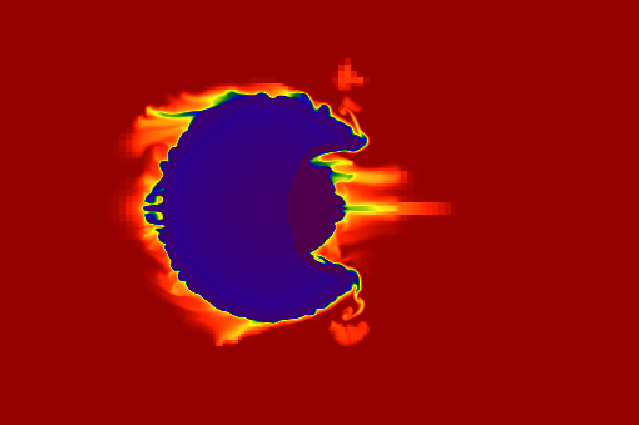-

Galactic Stellar Nurseries
The majority of stars are formed in cold, dense clouds of gas known as the Giant Molecular Clouds. The properties of these stellar nuseries control star formation in our galaxy, but how are they determined?
Elizabeth Tasker explores this question through numerical simulations, following these gas clouds as they begin --and end-- their life.
-

How Important is a Spiral?
When a star forms, does it care whether it is in a spiral arm, a central bar or further out in the disc?
By modeling the grand design spiral galaxy, M83, Yusuke Fujimoto has been comparing the properties of the star forming clouds that form in these different regions.
-

How do Early-type galaxies get their mass?
Early-type galaxies observed when the Universe was young are smaller and more compact that the contourparts we observe today. How did this evolution occur?
Using N-body simulations, Taira Oogi has been comparing the effects of different types of galactic mergers on an evolving galaxy to see exactly what is needed to produce this surprising discrepancy.
-

Things that go bump...
Galactic cloud collision has long been postulated as a mechanism for inducing high-mass star formation, however observational evidence was sparse.
Inspired by new observational results that suggest such collisions are common, Ken Takahira has been modelling cloud collisions and examining the results to uncover exactly how this mechanism operates.
-

Work in progress
We're currently working on our new website!
Please email us with any queries in the meantime.
| |
Department of Cosmosciences [日本] | Department of Physics [日本] | University of Hokkaido [日本] | Webmaster |